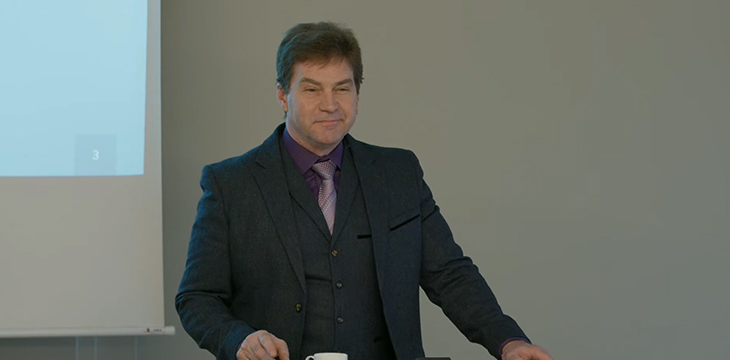
|
Getting your Trinity Audio player ready... |
“Bitcoin doesn’t stop the actions of humans,” says Dr. Craig S. Wright in the latest session of The Bitcoin Masterclasses Series 3 in Zurich. He’s talking about fraud—as long as you have humans as part of your system, there will always be bad actors trying to cheat to their advantage. So what mechanisms can we put in place to find who they are and what they’re doing?
The video for this session of The Bitcoin Masterclasses is available here (second half only). You can watch the entire Series 3 event on the CoinGeek YouTube channel, as well as all other previous The Bitcoin Masterclasses series.
Of course, we could make everything transparent and visible to everyone. Also of course, this solution is unacceptable to most people, both honest and dishonest. If it’s necessary to make some data auditable and other data private, fraud will almost always be hidden in the non-auditable part. Therefore, investigators rely on other forms of detection, like outliers and pattern-spotting.
Dr. Wright refers to “Benford’s Law” in accounting as a means to spot unusual activity in seemingly random series of transactions. This helps an auditor to identify data that may have been manipulated by humans, flagging them for deeper analysis.
Blockchain analysts like Chainalysis (similar to traditional financial investigators) can tell you “something happened here” in particular transactions, but not what that something was. We’ll still have to use more old-fashioned ways to investigate wrongdoing. However with the Bitcoin blockchain, we can still verifiably account that certain pieces of data exist, even if some of it can’t be seen by everyone.
“This moves us into a different realm. We have the ability to do accounting, but the ability to have accounting and privacy,” Dr. Wright said.
“When we’re thinking about how to structure data, the split becomes important.” We can break files down into parts, and use any hashing function to encrypt it.
Dr. Wright says we can use SPV and Merkle-ized structures to prove all the paths are there. For example, an auditor could sign off on a series of documents (say A-G) in the same Merkle structure, and then redact docs lettered D and F. Even though the actual data from D and F cannot now be viewed by others, we can still prove they were checked.
“I can now give you a signed document, but only part of the information.” This is how SPV (simplified payment verification) works in Bitcoin—any block of transactions can be checked as valid, but it’s not necessary to see the entire contents of the block or the transaction in it.
You could even do this with audio and video files, removing some parts of it (e.g., for public consumption) but removing others, all while remaining able to verify that the entire recording and its original content exists.
A breakout session following the tutorial suggests use cases such as passports and general ID (Dr. Wright often gives the example of his daughter who must show an ID to enter a venue, but doesn’t want to reveal her exact age and home address). This is important as these documents store ever-more personal data. Others include a business’ financial records, HR salary slips, proof of phone bill payment (without call itemization), health checkup results, credit scores, and taxes.
We’re heading into a future where all manner of personal information will be collected and stored. This future is coming whether a scalable Bitcoin blockchain is used to store that data… or not. Privacy laws can offer only temporary protection. In the end, that’s why we advocate for the most responsible system available; one that promotes information availability at the same time as privacy, and has the technological capabilities to make these processes efficient.
Dr. Craig Wright The Bitcoin Masterclasses provides deeper understanding of the technology
Recommended for you
Lorem ipsum odor amet, consectetuer adipiscing elit. Elit torquent maximus natoque viverra cursus maximus felis. Auctor commodo aliquet himenaeos fermentum
Lorem ipsum odor amet, consectetuer adipiscing elit. Accumsan mi at at semper libero pretium justo. Dictum parturient conubia turpis interdum

 11-22-2024
11-22-2024


